 |
Desert National Wildlife Refuge |
|
|
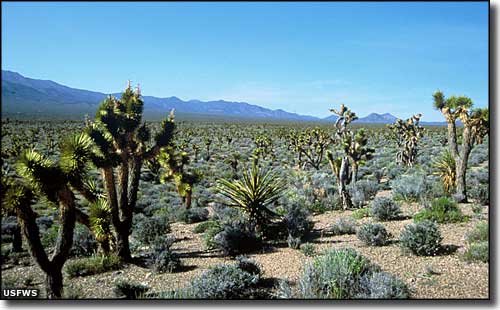 A typical scene at Desert National Wildlife Refuge |
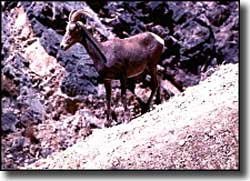
At 1,615,000 acres, Desert National Wildlife Refuge is the largest National Wildlife Refuge in the lower 48 states (there are 11 larger National Wildlife Refuges in Alaska). The most important role of Desert NWR is to preserve and protect valuable habitat for the desert bighorn sheep. As part of the management role played by the U.S. Fish & Wildlife Service, new water sources are developed and older ones are maintained and improved. A large part of this property is within the bounds of the Nevada Test & Training Range. This is an area of numerous small mountain ranges separated by chunks of barren desert with small dry lakebeds. This topography yields itself to several different plant and animal communities, depending on the elevation (which varies from about 2,500' to almost 10,000'). Annual rainfall in the area varies from less than 4" on the valley floors to more than 15" on the mountain summits. So you get a zone of desert shrub (creosote bush and white bursage), then cactus and Mohave yucca, then Joshua tree and black-brush, then big sagebrush, pinon pine and juniper, then white fir and Ponderosa pine until you reach near 10,000' and the zone where only the bristlecone pines can survive. Access to Desert NWR is off of US Highway 95, about 23 miles north of Las Vegas. There's a sign on the east side of the highway to mark the 4-mile gravel access road that leads to the Corn Creek Field Station where the visitor center is. Before going beyond that, you'll want to be sure you've got lots of food, water and fuel and that your spare tire is in good shape. You'll also want to have notified someone about where you're going and how long you'll be: a problem out in this countryside can quickly escalate to a life-and-death situation. Don't count on your cell phone... Hiking, backpacking, camping and horseback riding are popular activities with the folks that come here. Birdwatching is another perennial favorite. A limited amount of bighorn sheep hunting is allowed but you need to check with Refuge personnel for the particulars. About 1,433,100 acres of the Desert National Wildlife Refuge were proposed for wilderness designation in 1974. Since then, the Refuge has been managed as a "de facto" wilderness, meaning roads are very few and farther between. And as primitive as they are, they are what you have to work with. Keep vehicles on the "roads" and access the back country on either foot or horseback. Another aspect of the Fish & Wildlife management program is to clean up disturbed sites and erect barricades to stop the off-road vehicle use. Something else to keep in mind while you are tramping around in the back areas of Desert National Wildlife Refuge: some 846,000 acres of the property are also part of the Nevada Test and Training Range. That means the countryside is essentially a huge target zone to be used by Air Force pilots for learning how to use the armaments resident on the aircraft they fly in battle situations... |
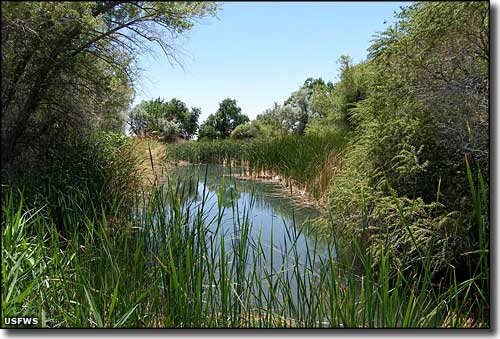 Corn Springs at Desert National Wildlife Refuge 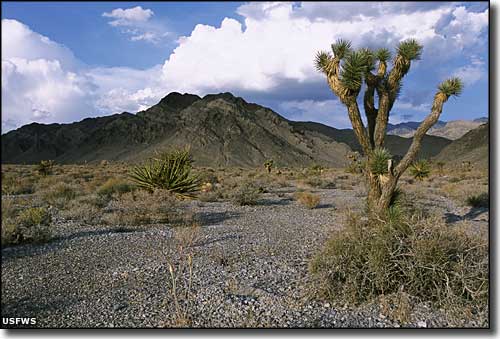 Another typical view at Desert National Wildlife Refuge 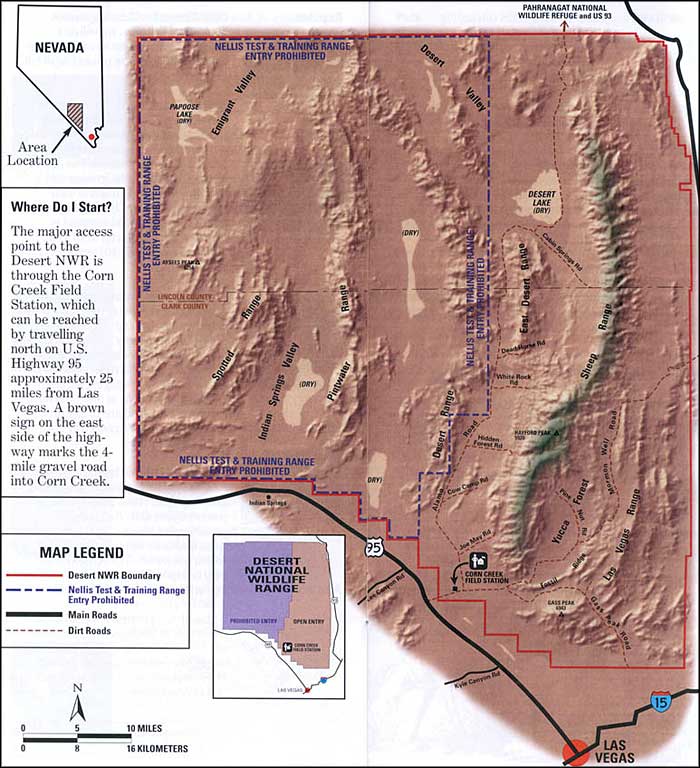 Desert National Wildlife Refuge area map |
|
|

|
| Index - Arizona - Colorado - Idaho - Montana - Nevada - New Mexico - Utah - Wyoming National Forests - National Parks - Scenic Byways - Ski & Snowboard Areas - BLM Sites Wilderness Areas - National Wildlife Refuges - National Trails - Rural Life Advertise With Us - About This Site - Privacy Policy |
| Photos and map courtesy of the US Fish & Wildlife Service. Text Copyright © by Sangres.com. All rights reserved. |